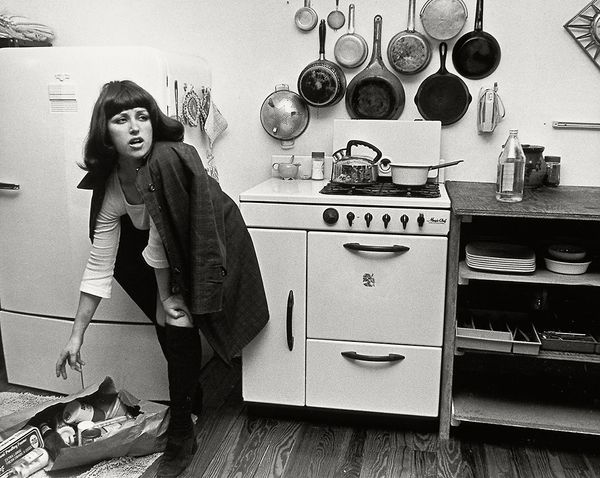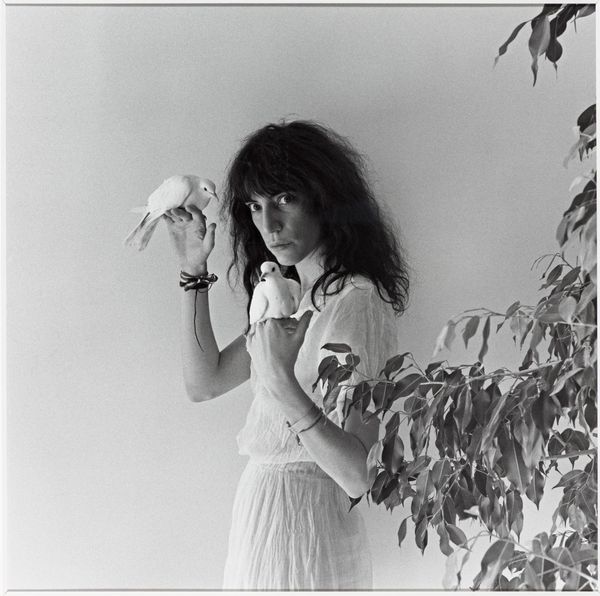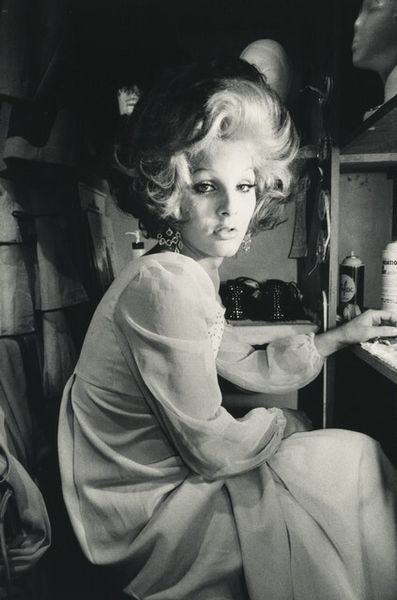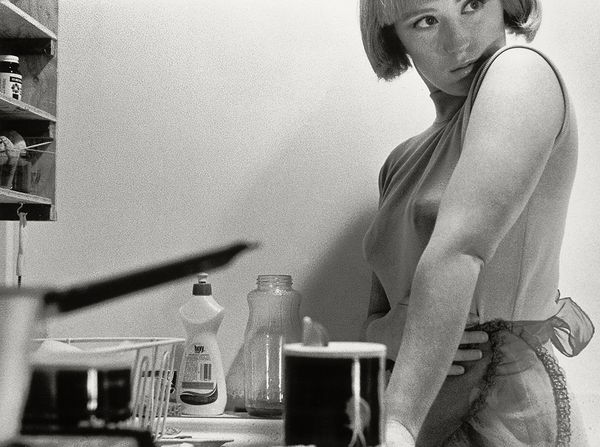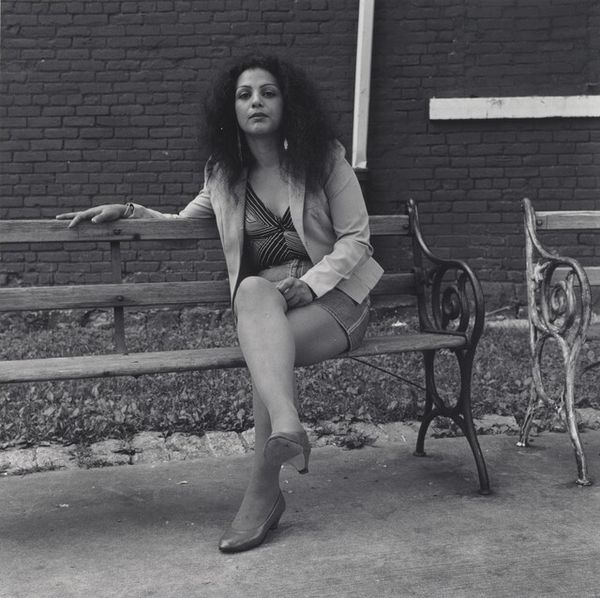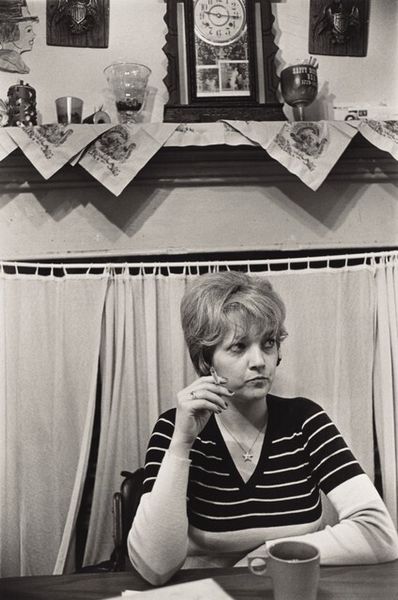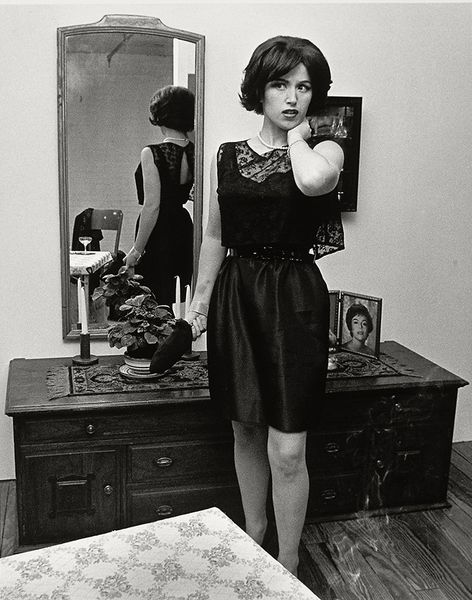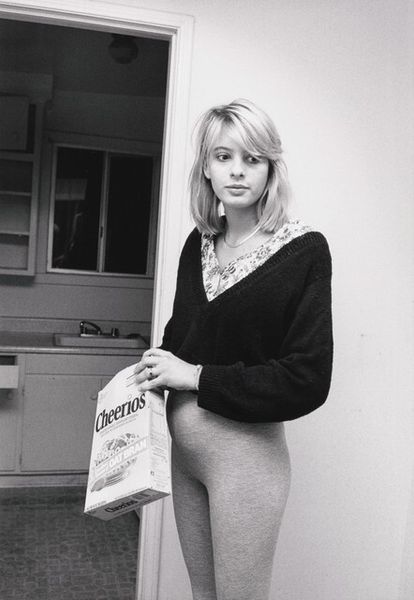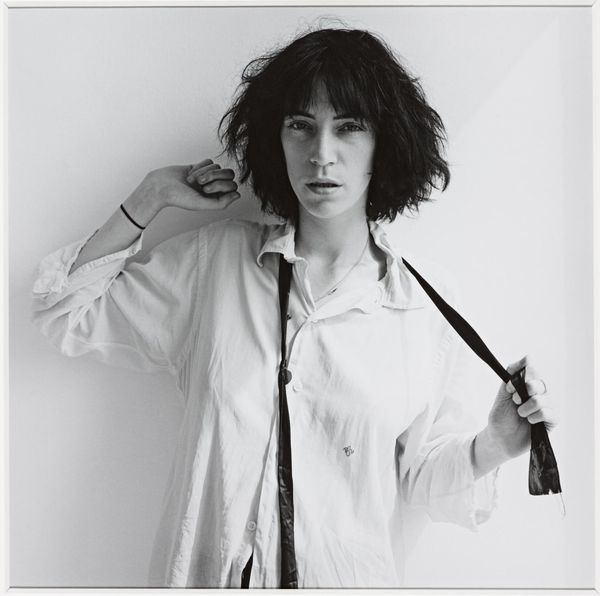
photography, gelatin-silver-print
#
portrait
#
pictures-generation
#
self-portrait
#
conceptual-art
#
black and white photography
#
postmodernism
#
photography
#
black and white
#
gelatin-silver-print
#
monochrome photography
#
genre-painting
#
monochrome
#
realism
#
monochrome
Copyright: Cindy Sherman,Fair Use
Editor: So this is Cindy Sherman's "Untitled Film Still #10" from 1977, a gelatin-silver print. It looks like a still from a low-budget movie. I find her expression intriguing – almost weary. What's your take on it? Curator: This photograph immediately makes me think about the constructed nature of identity and labor, specifically in relation to the representation of women in film. The materials themselves, the photographic paper and the process of development, are crucial. Sherman isn't presenting a 'real' woman; she's performing a role, a stereotype, built from the raw materials of cinematic conventions. Notice the cheapness of the grocery items and appliances. How do those material signifiers inform our understanding of the character? Editor: It feels like she’s pointing out the readily available, almost disposable, roles women are offered. The low-quality materials—the visible cans, the basic set design, and her ambiguous but somewhat anxious gaze—seem to add to the idea that these roles aren’t particularly fulfilling. Curator: Precisely. Think about the labor involved: Sherman acting as model, costume designer, photographer, all rolled into one. She collapses the traditional hierarchy between artist and subject, highlighting the means of production itself. She draws our attention to the consumption of images and the commodification of female identity within the film industry. What does this suggest to you about Sherman’s perspective on female agency? Editor: I guess she’s questioning whether those readily available roles actually allow for true agency or if they simply perpetuate existing stereotypes. I appreciate that it calls into question our understanding of work for actresses, how it relates to larger ideas about female roles in society. Curator: Yes, she is interrogating those representations. We must consider the ways these images were circulated and consumed, impacting both the art world and popular culture, challenging boundaries between high art and low craft. This connects to the historical exploitation of female bodies and identities. Editor: I see what you mean. Looking at it through the lens of material and process really adds another layer to this "film still" about labour and construction. It is not a single image but an examination of industrial process. Curator: Absolutely. Considering materials expands our view to grasp complex dialogues on labour, production, and image construction in art history.
Comments
No comments
Be the first to comment and join the conversation on the ultimate creative platform.
